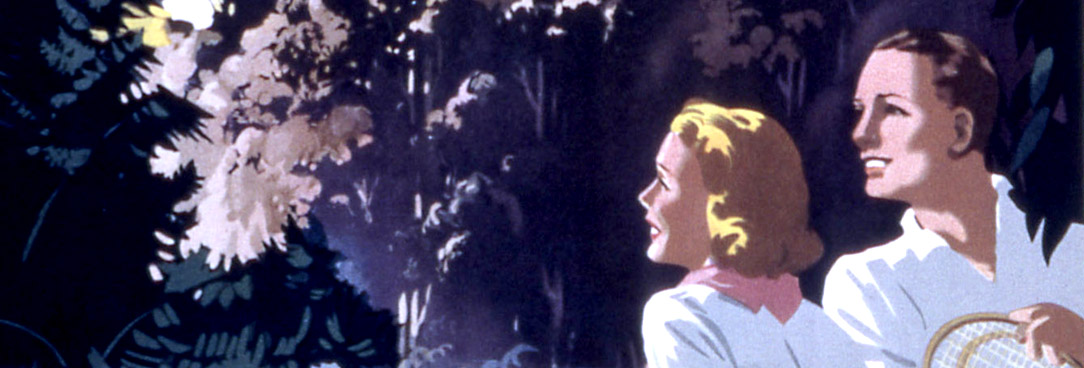
Author: Natasha Cantwell
Communications & Public Programming Officer
The 1930s have been dubbed the Golden Age of poster design in Australia. This was partly due to the efforts of the Victorian Railways and the Australian National Travel Association to promote tourism and outdoor recreation by commissioning posters from the best commercial artists of the day.
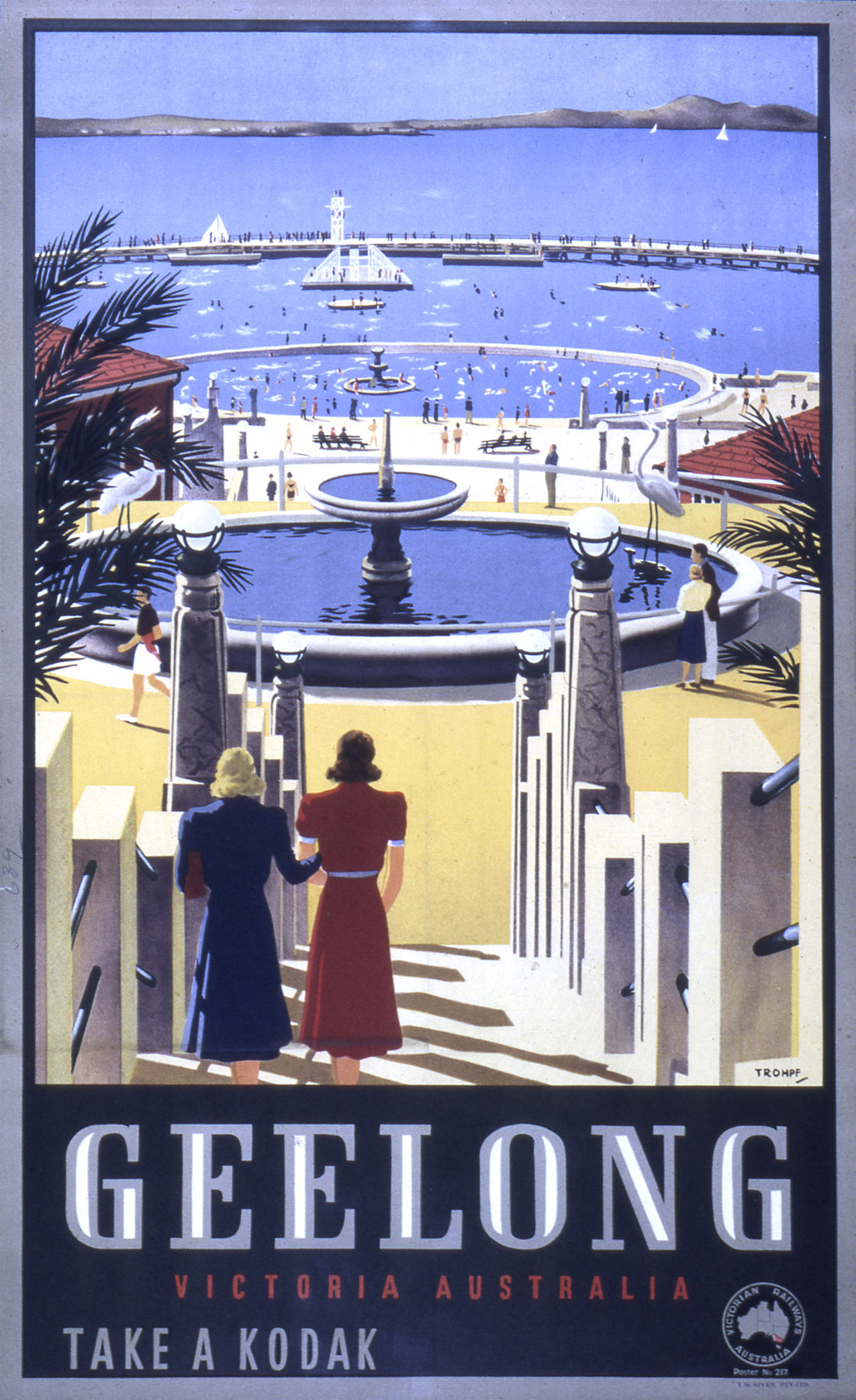
Three of the most popular and influential artists, Gert Sellheim (1901-1970), James Northfield (1887-1973) and Percy Trompf (1902-1964) were colleagues at Melbourne’s Art Training Institute. Trompf and Northfield, who were both born in small town Victoria, idealised the Australian countryside in lush, painterly tones. They enticed their audiences with depictions of wholesome holidaymakers marvelling at majestic landscapes. It was always perfect weather to “Take a Kodak”, with brilliant blue skies and intense sunshine creating dramatic shadows.
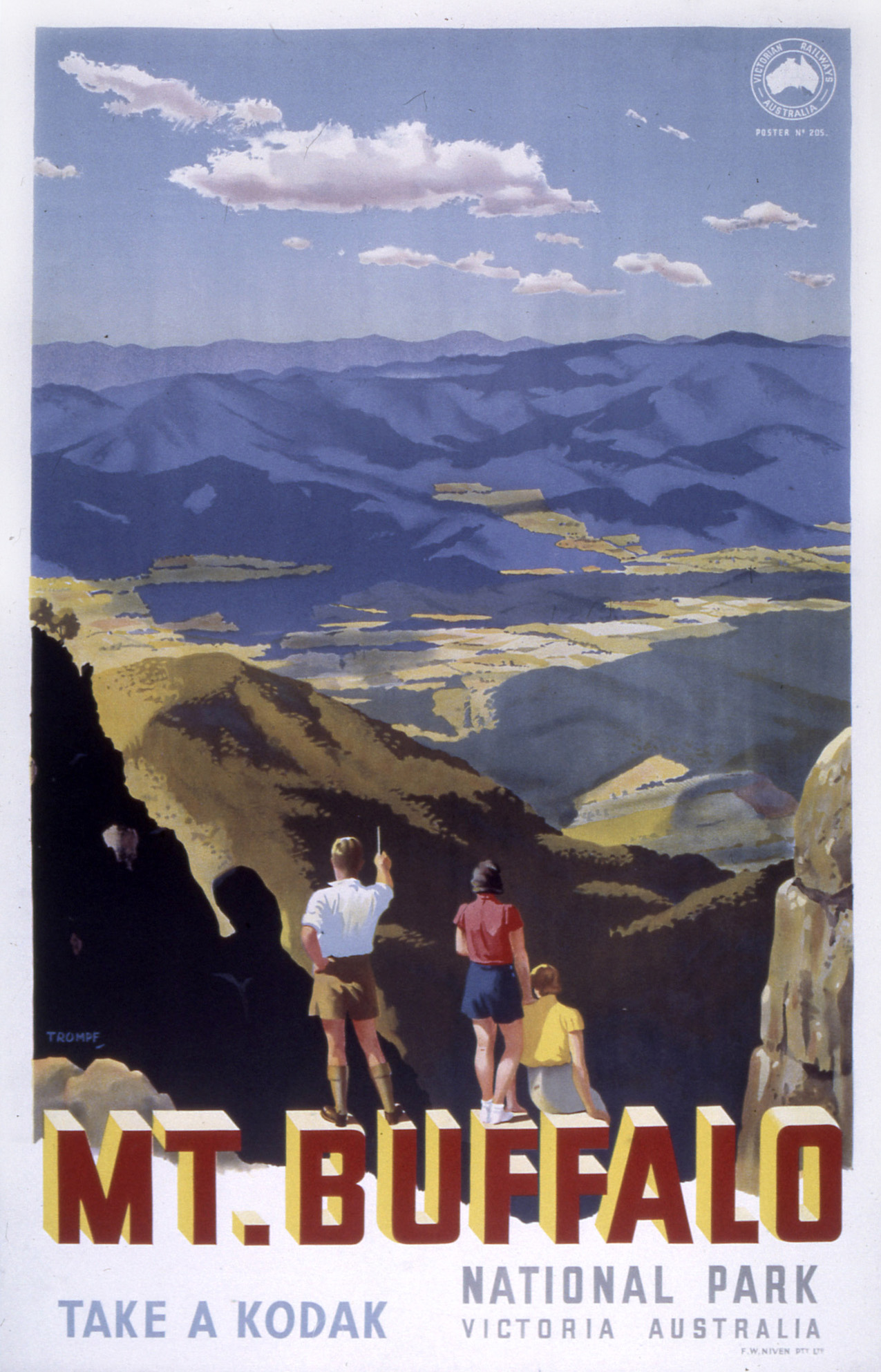
Their posters beautifully combined colourful, often full-bleed illustrations with sparingly used text, mixing sans-serif and elegant art deco typefaces. As Australia suffered the effects of the Great Depression, these optimistic images were hugely popular with the public. The simple pleasure of a nature walk around Mount Macedon or a day at the beach in Geelong was an achievable dream to most Melburnians.
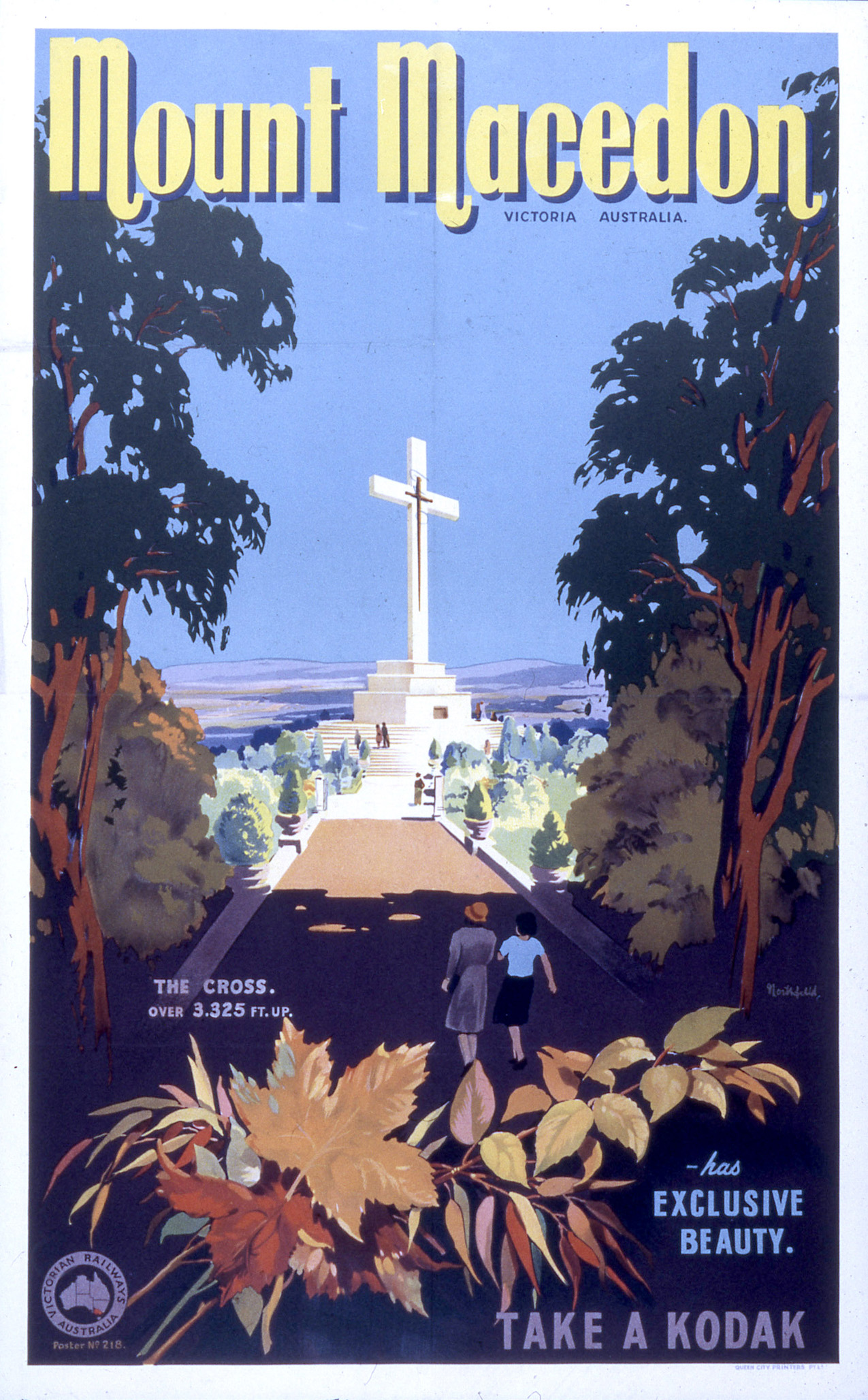
In contrast to this romantic vision, Sellheim’s aesthetic was bold, abstract and minimalist. The modernist designer and architect was born in Estonia and studied in Berlin, Munich, Vienna, Graz and Paris. His European education exposed him to major international trends, such as cubism and photomontage, and he brought a radical, avant-garde style with him when he immigrated to Australia in 1926.

Originally finding it difficult to get work, as his overseas architectural qualifications were not recognised, Sellheim began working as an architect in Perth in 1929, before moving to Melbourne in 1931. It was here that he started his career as a graphic artist, creating posters principally for the Australian National Travel Association and the Victorian Railways. Braking from conventional illustrative traditions, his stylised depictions of fun at the seaside, let the viewer's imagination fill in the gaps.
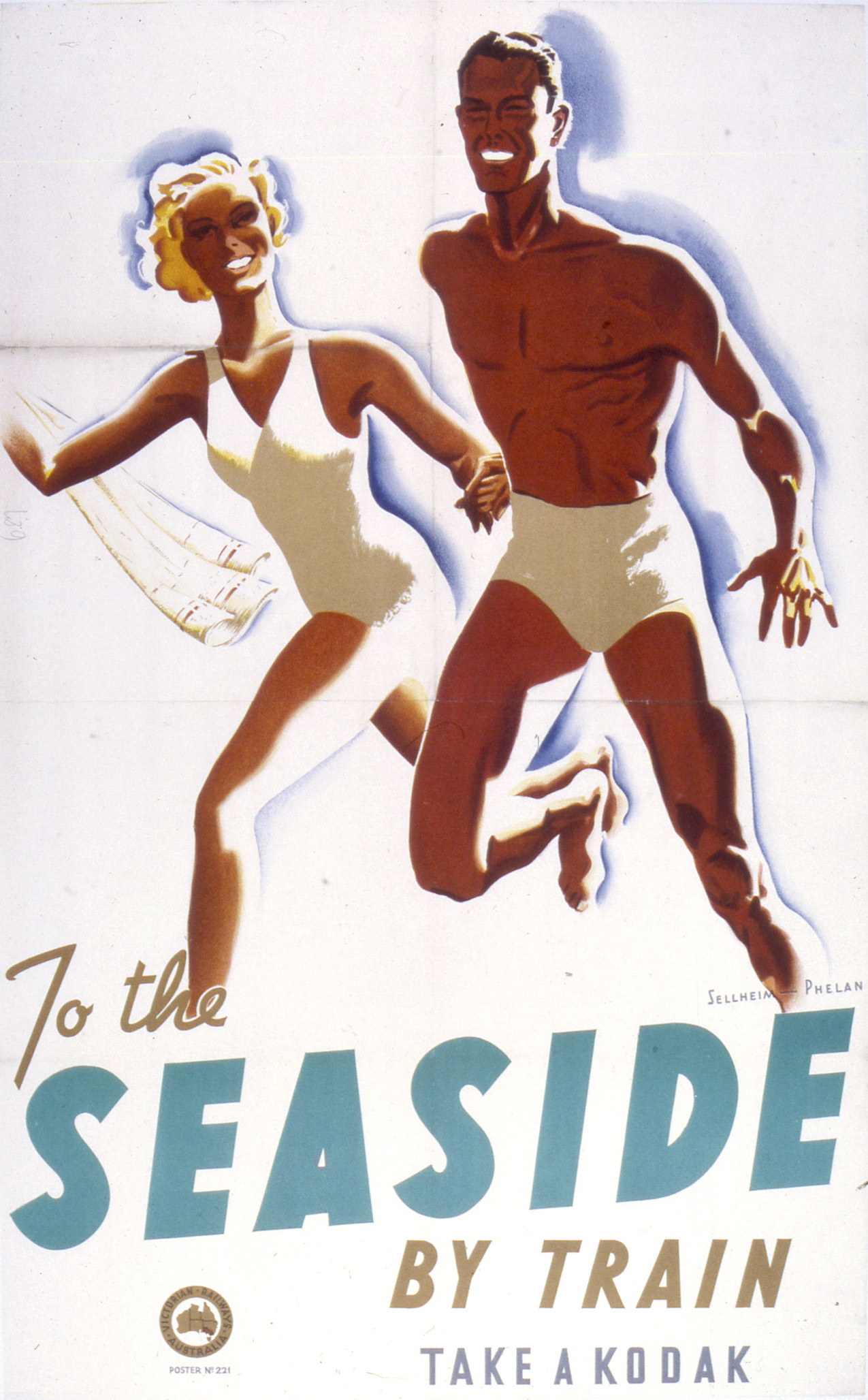
The outbreak of World War II led to a suspension of the demand for travel posters. After the War, colour photography and screen-printing gradually replaced illustrative work but the influence of the Golden Age of poster design continues to influence artists today.
To see more posters from these artists and their contemporaries, take a look at our Flickr album Art Deco Victorian Tourism & Railway Posters.
Material in the Public Record Office Victoria archival collection contains words and descriptions that reflect attitudes and government policies at different times which may be insensitive and upsetting
Aboriginal and Torres Strait Islander Peoples should be aware the collection and website may contain images, voices and names of deceased persons.
PROV provides advice to researchers wishing to access, publish or re-use records about Aboriginal Peoples
